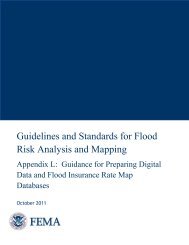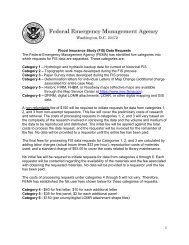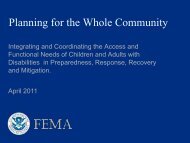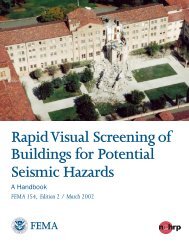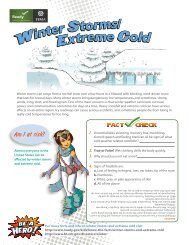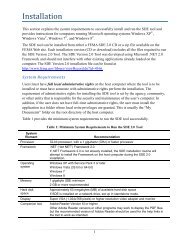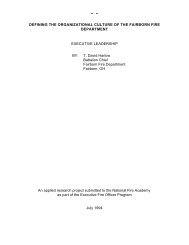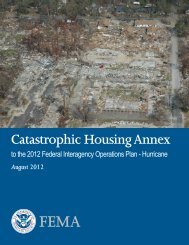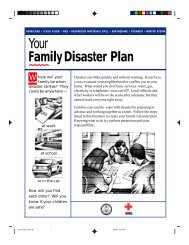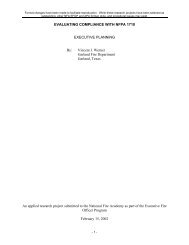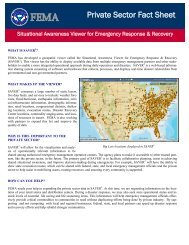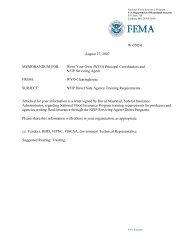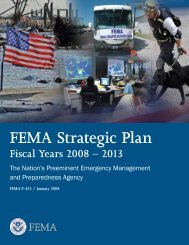Joint Field Office Activation and Operations - Federal Emergency ...
Joint Field Office Activation and Operations - Federal Emergency ...
Joint Field Office Activation and Operations - Federal Emergency ...
Create successful ePaper yourself
Turn your PDF publications into a flip-book with our unique Google optimized e-Paper software.
UNCLASSIFIEDTab 3 to Annex B: After-Action <strong>and</strong> Lessons Learned (Hotwash)Report (LLR)1.0 GeneralThe After-Action Report is a narrative summary of the operations, contingency response, orexercise. An AAR may contain specific associated lesson(s) learned <strong>and</strong> primarily:• Summarizes JFO operations or exercises,• Assesses how well the NRP’s objectives were accomplished, <strong>and</strong>• Documents major lessons learned for follow-up action, including action by theSecretary of Homel<strong>and</strong> Security through the SEC RAMP.The Planning Section Chief is responsible for initiating the AAR/LLR process prior todemobilization of the Planning Section. The PFO/FRC/FCO, as appropriate, is responsible foroverseeing the AAR/LLR process in a manner to comply with the deadline.The Lessons Learned (Smart Practice) Report is a st<strong>and</strong>alone record that documents specificissues, problem areas, best practices, <strong>and</strong> work-arounds pertaining to operations, contingencyresponse, or exercises. Each lesson learned should be prepared so that it does not rely on anotherpart of the document (AAR/LLR) for clarification. The AAR for the JFO does not replaceseparate agency after-action processes. The JFO AAR may be integrated into agency-specificafter-action systems. AARs/LLRs pertaining to the JFO established for a NSSE will addressonly the JFO <strong>and</strong> NRP aspects of the operation.2.0 ObjectiveThe objective of the JFO AAR/LLR process is to provide an assessment of JFO effectivenessduring the incident response or exercise. It includes a brief mission description <strong>and</strong> significantevents, discussion of interoperability with other organizations, <strong>and</strong> recommendations. It mayidentify areas for improvement in homel<strong>and</strong> security doctrine (i.e., policy, procedures, plans, <strong>and</strong>tactics) <strong>and</strong> training. Individual lessons learned may be attached to the AAR, providing a morecomprehensive picture of the response or exercise. Individual LLRs are used to describe a betterway of accomplishing a task or overcoming a problem, describe a successful action that shouldbe noted for future contingencies, describe a problem encountered <strong>and</strong> the action the participantstook to bypass or alleviate that problem, or document an issue that was encountered for which nosolution was found.3.0 Requirements for SubmissionThe JFO AAR/LLR should be completed <strong>and</strong> forwarded to arrive at the DHS/PreparednessDirectorate within 60 days of JFO st<strong>and</strong>-down <strong>and</strong> should be in the format outlined below.4.0 AAR Format4.1 Identifying InformationThis section provides st<strong>and</strong>ard information to index <strong>and</strong> identify the report <strong>and</strong> document17Version 8.3Interim Approval April 28, 2006



